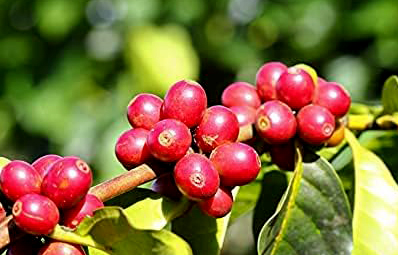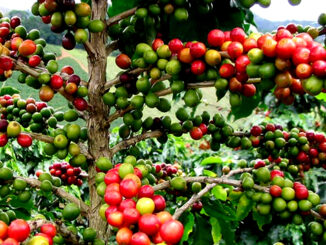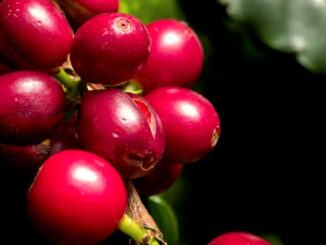
The Java coffee variety is one of the most historic and distinguished Arabica coffees in the world.
Originating from the island of Java in Indonesia, it has been cultivated since the 17th century, making it one of the oldest continuously grown coffees known to humanity.
Famous for its full body, mild acidity, and earthy sweetness, Java coffee delivers a cup that feels smooth, rich, and deeply satisfying — a timeless classic among coffee lovers.
🌍 Origin and History
The story of Java coffee begins in the late 1600s, when Arabica coffee plants from Yemen were brought by Dutch traders to the island of Java, part of the Indonesian archipelago.
The Dutch East India Company established coffee plantations on the island’s volcanic highlands, and by the early 1700s, Java became the world’s first large-scale coffee exporter.
For centuries, Java coffee was synonymous with quality and exotic flavor — so much so that “a cup of Java” became a popular slang term for coffee itself.
🌿 The Java Variety
The Java variety is a cultivar of Arabica coffee (Coffea arabica), originally derived from the Typica line.
Over time, it developed distinct traits due to Indonesia’s unique climate and soil, as well as natural adaptation to local conditions.
A modern strain of Java, known as Java (Arabica) cultivar, was later selected in Ethiopia and introduced to Indonesia, Cameroon, and Central America for its disease resistance and excellent flavor potential.
Key characteristics of the Java variety:
- Species: Coffea arabica
- Growth habit: Tall and strong
- Altitude: Grows best between 1,200–1,800 meters
- Yield: Moderate but consistent
- Resistance: Good tolerance to leaf rust and pests
- Flavor profile: Smooth, spicy, and full-bodied
🌾 Where Java Coffee Is Grown
The Java coffee variety is cultivated mainly on the island of Java, particularly in the Ijen Plateau in East Java, where volcanic soils and mountain rains create perfect growing conditions.
However, the Java variety has also spread to other coffee-producing countries due to its quality and resilience.
Main growing regions include:
- Indonesia (Java Island): The original and most famous source.
- Ethiopia: Where the improved Java cultivar was developed.
- Cameroon: Produces Java with mild citrus and cocoa tones.
- Central America (e.g., Nicaragua, Costa Rica): Smooth, sweet, and balanced versions of Java coffee.
☕ Flavor Profile
The Java coffee variety is known for its low acidity, full body, and complex, earthy sweetness.
It offers a deep, comforting flavor that’s rich but never overpowering — perfect for those who enjoy smooth, mellow coffee.
Typical tasting notes include:
- Spicy aroma with nutmeg, clove, or cinnamon hints
- Earthy depth balanced with chocolate sweetness
- Nutty undertones like roasted almond or hazelnut
- Mild fruitiness with low acidity
- Long, smooth finish
A well-prepared cup of Java coffee feels round and balanced, with a flavor that lingers pleasantly after each sip.
🌸 Processing and Roasting
Traditional Java coffee is wet-processed (washed), producing a clean and smooth cup with refined sweetness.
However, some small farms also experiment with natural or honey processes to bring out fruitier tones.
Roast levels:
- Medium roast: Highlights balance and sweetness.
- Medium-dark roast: Enhances body and spice.
- Dark roast: Brings smoky chocolate depth and a syrupy finish.
Roasters often favor medium-dark to capture Java’s classic, old-world richness.
☕ Brewing Recommendations
Because of its smooth body and balanced flavor, Java coffee works beautifully across multiple brewing methods.
Recommended brews:
- French Press: Enhances body and earthy richness.
- Pour-over (V60 or Kalita): Highlights sweetness and spice.
- Espresso: Produces a smooth, chocolaty shot with minimal acidity.
- Cold brew: Clean, sweet, and pleasantly mild.
Use a medium grind and water around 93°C (199°F) for the best extraction.
🌱 Sustainability and Tradition
Many Java coffee farms are still run by smallholder families using traditional methods that respect the land and local ecosystems.
Some estates, like the historic Blawan and Jampit plantations, date back to Dutch colonial times and continue to produce coffee using sustainable practices.
Sustainable features include:
- Shade-grown cultivation.
- Organic composting and natural pest control.
- Hand-harvesting of ripe cherries.
- Sun-drying to preserve natural sweetness.
These practices maintain the authentic, old-world character that has defined Java coffee for centuries.
❤️ Final Thoughts
The Java coffee variety is more than just a classic — it’s a living legend.
With its silky texture, low acidity, and spicy-sweet flavor, it captures the essence of coffee’s global journey from the ancient world to the modern cup.
Whether enjoyed as a pour-over, espresso, or French Press, Java coffee offers a timeless taste of history and tradition.
☕ Java coffee — smooth, earthy, and eternally elegant.
DeliciousPath: Enjoyment in Every Moment
Explore the Gourmet on Board category for exquisite flavors that elevate your meals, even when you’re on a boat, and the Coffee category for aromatic coffee blends that make every moment special. DeliciousPath is here to turn every experience into something unforgettable!
























